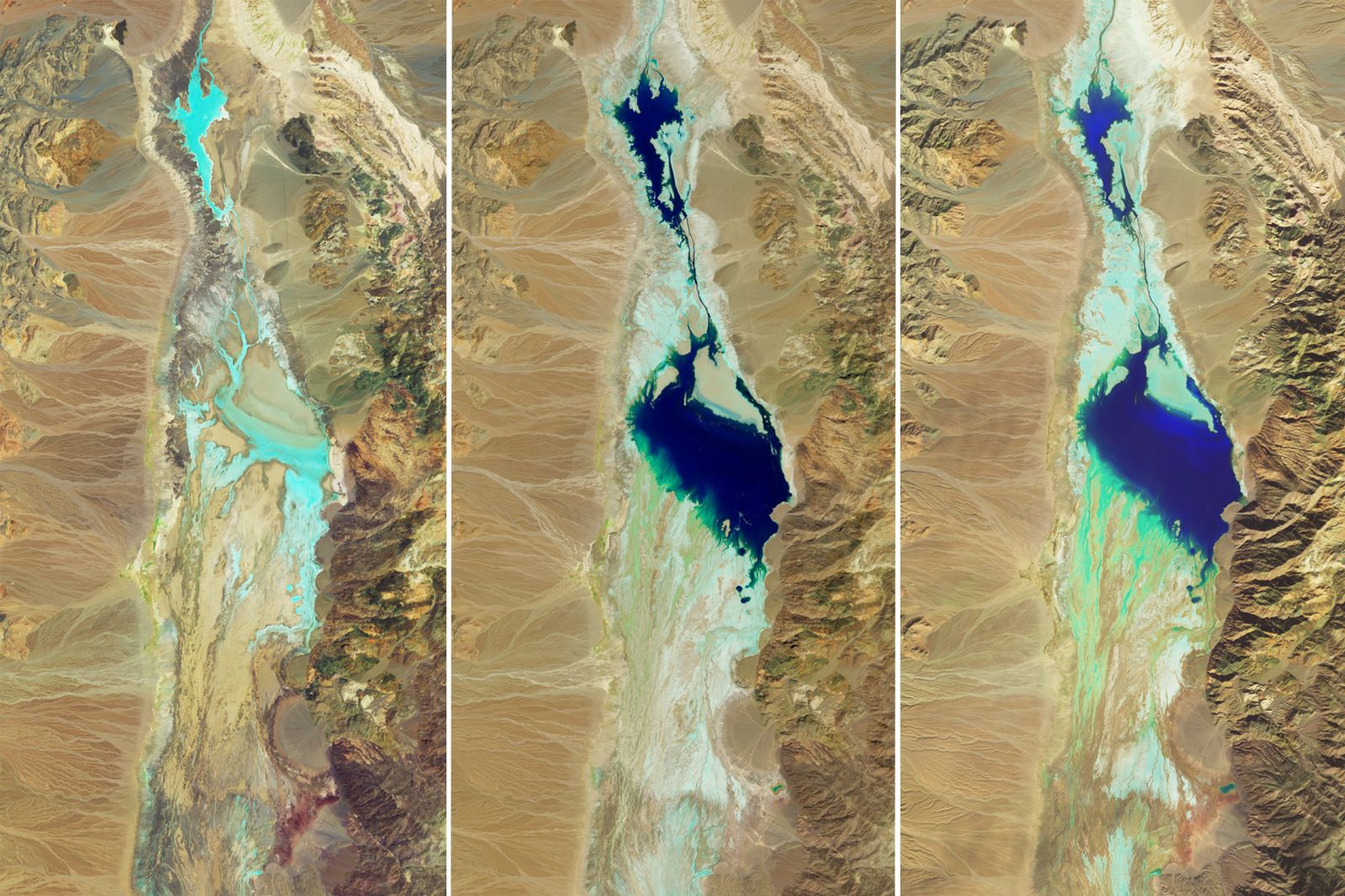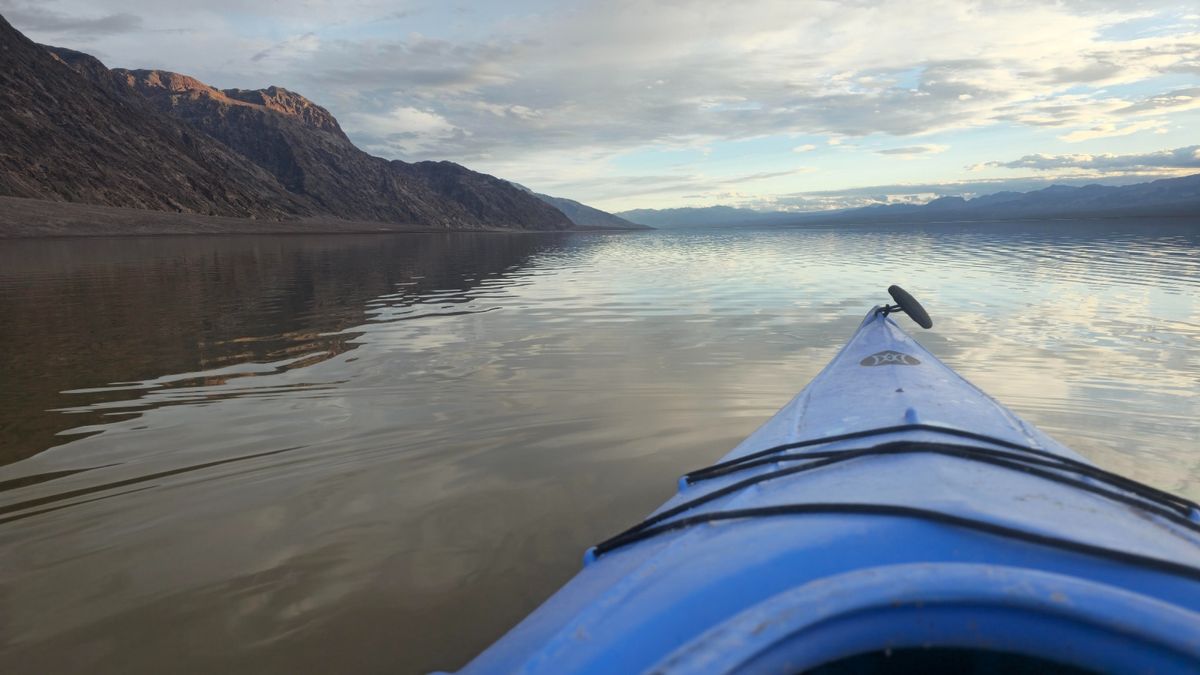How Does This New Large Lake Manage to Survive in Death Valley?
Follow us on Google News (click on ☆)

False-color satellite image of the ephemeral lake at Badwater Basin in Death Valley National Park on July 5, 2023, August 30, 2023, and February 14, 2024. The dark blue areas represent standing water and the green color represents moist soil.
Credit: NASA Earth Observatory/Landsat/Wanmei Liang
At the heart of the Badwater Basin, the lowest point in North America, typically lies a desolate landscape, marked by dry, salt-crystallized soil. However, following exceptional rainfall, this depression has been transformed into a temporary water lake, extending up to 7 miles long.
Usually, rapid evaporation due to the scorching heat of Death Valley limits this phenomenon to a few weeks. But unexpectedly, the lake, formed at the end of August 2023 following Hurricane Hilary, has not only reached an impressive size but has also defied the natural cycle by persisting well beyond the usual lifespan for a lake in this location.
The cumulative rainfall of nearly 4.9 inches (approximately 12.4 cm) over the past six months has helped maintain and even replenish the lake, allowing it to host unexpected activities such as kayaking. This phenomenon, coupled with a rare snow cover on the surrounding peaks, brought by an atmospheric river in early February, highlights the strangeness and surprising beauty of these natural events in such an inhospitable environment.

The lake is deep enough for kayaking.
Credit: NPS/Michael Kohler
Experts remain puzzled as to why the lake has managed to persist for so long, mentioning a major anomaly compared to previous observations. Despite the lack of historical data on the lifespan of such ephemeral lakes, the current persistence of the water body in Death Valley is a reminder of nature's ability to surprise and defy expectations.
This ephemeral lake, located in a place symbolic of extreme aridity, reminds us of the power and unpredictability of weather phenomena, but also the importance of monitoring and studying these anomalies to better understand the complex environmental dynamics of our planet.